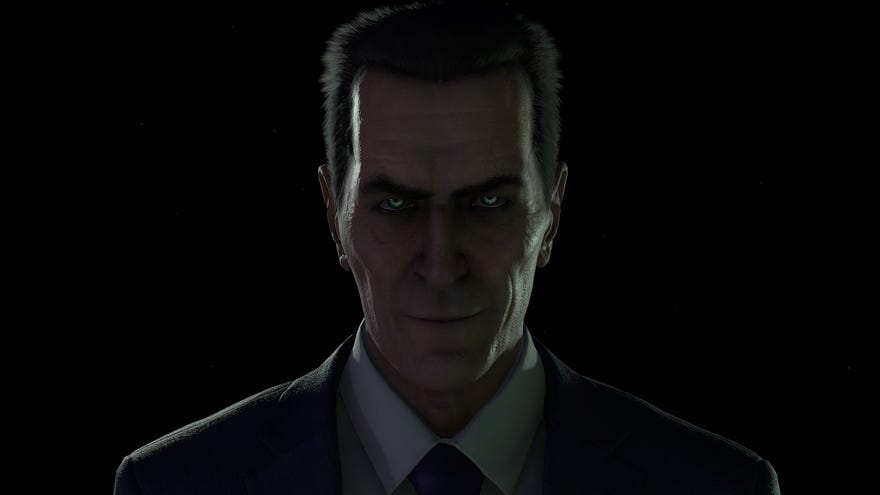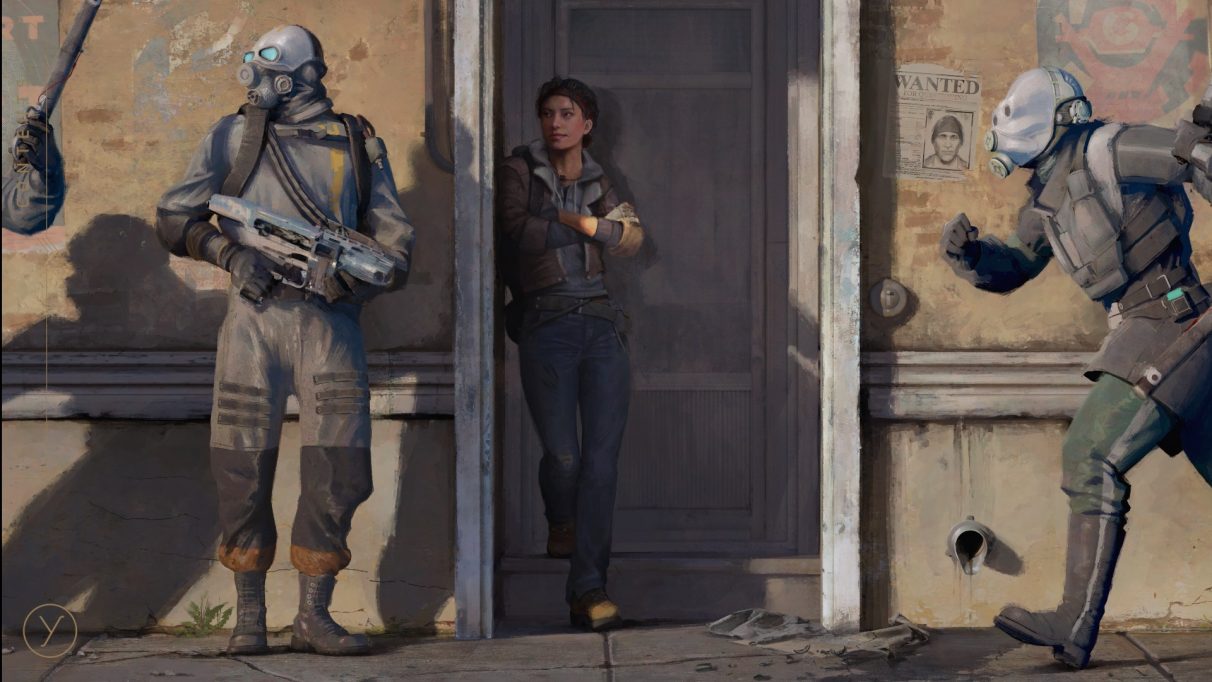Five cool things we learned from Valve's Half-Life: Alyx - Final Hours documentary
From wheely desks to invisible headcrabs
I've only ever played bits and pieces of the Half-Life games, but it's been a delight learning the ins and outs of their creation from Half-Life: Alyx - Final Hours. It's a multimedia documentary on all things Valve - their (many) cancelled games, a close look at life during Alyx's development, and the ups and downs the developers went through in making sure Half-Life returned in the best way possible. I've pulled out some of my favourite snippets of info from the doc, so read on to hear all about Alyx's invisible headcrab, and why I now believe that G-Man's actor might actually be G-Man in real life.
Valve's wheely desks contributed to the intervention that birthed Half-Life: Alyx
It's fairly common knowledge that Valve doesn't (or didn't) really have a management structure when it comes to game development. Employees are pretty much free to choose to work on the projects they think they'd be best on which, in theory, sounds like a wonderful way to work. You've probably heard before that all the desks at Valve are on wheels so they can "roll in and out of development rooms on moment's notice". Thinking about it gives me a mental image of wheely desks wildly rolling around everywhere, development notes flying through the air as they pass. While that's absolutely an exaggeration, it seems it's not too far from the truth of what happens when you have such a free working environment. The lack of instruction coming down from any sort of hierarchy meant all the devs were spread a bit too thin, meaning lot of their projects just never got finished. What they needed was something to bring a team together. Something big that everyone could really focus on.
Lo and behold, in 2016, a sort of intervention was held, and the idea for a Half-Life VR game was born.
G-Man's face model turned up to his scanning session in a full suit and tie
In 2010, when Half-Life 3 wasn't yet amongst the list of Valve's many cancelled games, Valve invited the face of G-Man, Frank Sheldon, to a "top secret photo" scan session to get his face into the third game. Living up to his role of the mysterious interdimensional bureaucrat, he arrived in a full suit and tie for the occasion. The commitment. The dedication. I'm almost convinced that maybe Sheldon truly was The G-Man. He's supposed to be an interdimensional dude after all, what if he left his other dimension to become himself in Half-Life? Is that how dimensions work? Who knows!
Though Half-Life 3 never came to pass, Sheldon's 3D face scans did end up as reference for the Valve team working on character animations in the Source 2 engine.
A month before launch, Half-Life: Alyx had an invisible headcrab on the loose
It wasn't an intentional invisible headcrab, mind you, it was very much a bug. But right when these sorts of kinks were being ironed out, it was the very beginnings of the Covid-19 pandemic. Unfortunately for Valve, their offices are based in Seattle, which was one the early hotspots for coronavirus. I imagine playtesting your highly-anticipated game and trying to make sure all the little bugs are fixed in normal circumstances isn't the most stress-free of times, let alone when you're distanced from your coworkers under threat of a pandemic. Needless to say, however, the invisible headcrab was defeated, albeit remotely.
Valves first VR headset was codenamed Vader, and probably would've costed you $5000
Vader was the predecessor to the Valve Index (which, amusingly, started life named Frank internally). Said to be a "compact, cradle-based headset design with incredibly high-resolution panels", they maxed out just about everything they could with the tech, and made it just a bit too ambitious. "It was a growing-up moment for the team," one of the developers said, and I'm not surprised. It must've been a pretty sobering thought realising a piece of gaming hardware you'd made would cost a consumer upwards of $5000 (which is around £4000). Inevitably, Vader got cancelled, setting the hardware team back an entire year. The Index was the result of that mishap however, and it ended up with all the best bits from Vader - minus the extortionate price tag.
Half-Life: Alyx's story was scrapped and redone six months before it was originally supposed to launch
In 2019 after Alyx was mostly complete, there was a huge internal test letting the entire company play through the game's story. While almost everyone was enamoured seeing Half-Life done properly in VR, the game's story was massively criticised. This was obviously a huge blow to a company that's pretty well-known for creating great narratives. It was only made worse by the fact that if they wanted to make large scale changes to the game at that point, it meant that it wouldn't release on time to coincide with Valve Index headset launch.
In the end, that didn't matter to Valve as much as making sure Half-Life: Alyx's story was perfect. So, six months before the game was meant to ship, they changed the lot. This, mixed with other difficulties during production, pushed the intended release date from summer 2019, all the way into spring this year.
I can't comment on what we ended up with because I haven't had the chance to play it myself, but Graham deemed the game an RPS bestest best in his Half-Life: Alyx review, so they must've done something right.
You can check out all of this and more for yourself in Half-Life: Alyx - Final Hours, which is available on Steam for £7.19/€8.19/$9.99. A quick warning, though - it's full of Half-Life: Alyx spoilers, so best avoided if you haven't had a chance to play it yet.




